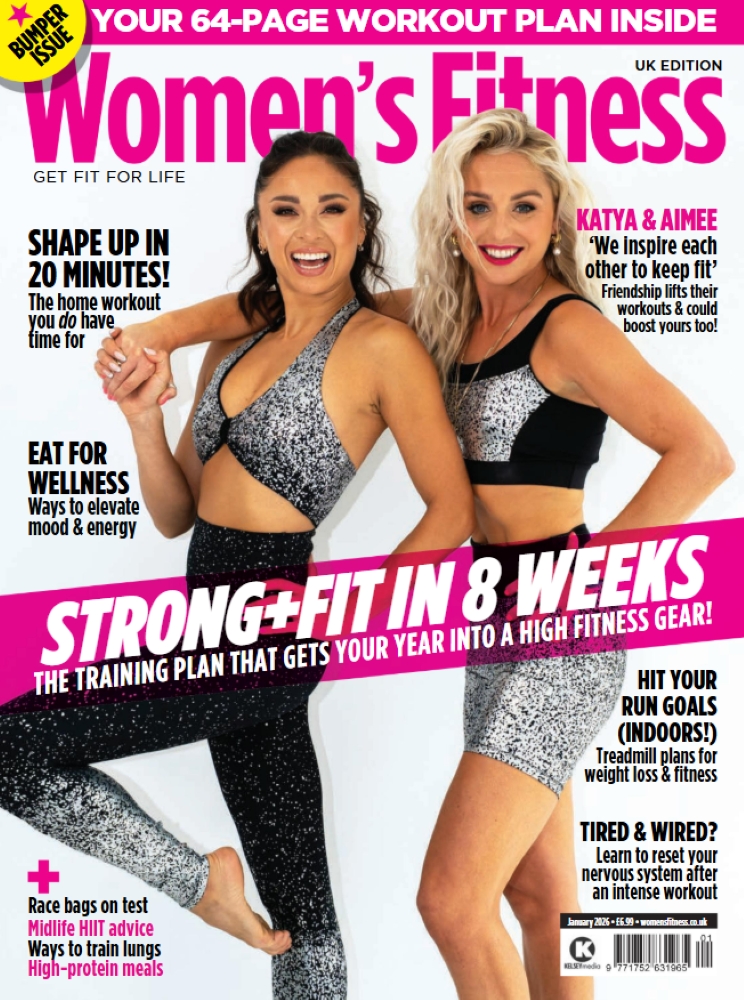The first six weeks after birth are often strictly seen as a no exercise time. However, there are some gentle postnatal exercises you can try once you feel ready, according to personal trainer and author of The Bump Plan, Hollie Grant.
DISCLAIMER: Every woman, and every birth, is different. While the following postnatal exercises can support your recovery during the first six weeks after birth, it’s important to listen to your body and check in with your midwife or health practitioner if you have any concerns.

Hollie is the founder of Pilates PT and creator of The Bump Plan.
For many women, and for many postnatal fitness plans, the six-week GP check-up has always been a basic deadline for returning to exercise after giving birth. However, your six-week check-up is really about your baby. The GP will usually weigh your baby, check their stats, feel their tummy, look at their skin and assess their belly button healing. It’s not a very long appointment, and lots of mothers report that they themselves aren’t even assessed. As a result, women may leave those appointments and think they can start exercising, but often, no one’s checked them over to confirm this. Therefore, this basic deadline can sometimes be quite unhelpful and limiting for many women’s recovery.
Is it a no- exercise time?
While it’s not the time for high-impact exercise, the NHS says you can start gentle activity (stretches, pelvic floor exercise etc) as soon as you feel ready. Indeed, many experts, including women’s health physios, diastasis experts and GPs, feel postnatal women are missing key knowledge on what to do in those first few weeks. These experts are seeing women who have done nothing for weeks, because they don’t know what is safe to do, and when they go back to exercising normally, wonder why they don’t feel right, or they risk prolapse. It’s crucial to bridge this gap and support mums from day one after birth, giving them the information and empowerment they need to move and strengthen their bodies in a safe and nourishing way, once they feel ready to, so they can safely lay the foundations for eventually returning to regular exercise.
Your recovery- phase routine
These gentle routines aim to get your body moving gradually, to rehabilitate your muscles and start giving your body the awareness it needs ahead of any higher-level movements. Imagine you’re waking up your body, while also easing some of the aches and pains that can linger from labour and those first few weeks of parenting.
SAFETY NOTE: While it will vary from person to person, it’s recommended to rest for one week post-vaginal birth or one-to-three weeks post-C-section before trying these routines. If you try some moves and they don’t feel right, remember you can always wait a little longer, and come back to try again when you’re ready.
Pelvic-floor routine

Understandably, the pelvic floor can feel a little different after having a baby. Re-finding the pelvic floor is important and, over time, it’ll get easier to feel and activate. Aim to do these exercises three times a day if you feel able to:
- Start in a position that is comfortable for you. That might be seated or side-lying, but standing would be one of the hardest positions, so I wouldn’t advise that just yet. Close your eyes (if possible) and focus on your breath.
- Inhale and, as you exhale, think about squeezing and lifting the pelvic floor muscles, and hold. Hold for as long as you can (up to 8-10 seconds) and then relax. Aim for 10 long holds.
- Now try 10 fast pulses, where you squeeze and release rapidly.
REGRESSION: You want the pelvic floor muscles to feel tired by the end of this, so try not to make it too easy, but you can start with shorter holds or fewer repetitions, if that helps, and then build up over time.
PROGRESSION: Standing is one the hardest positions to practise your pelvic floor exercises in, so you could build up to that for a challenge when ready.
TIP: Use a visualisation that works for you: this might be imagining picking up blueberries with your vagina or sucking a smoothie through a straw – whatever resonates with you and encourages both a squeezing of the pelvic openings (urethra, vagina and anus) and a lifting.
Best nursing sports bras for active mums
Breathwork routine

- Make sure you are sitting, lying or standing in a comfortable position.
- Begin by inhaling through your nose and exhaling through your mouth. Get this circular pattern of breathing started first.
- With each inhale, start to visualise the diaphragm contracting and sucking air into the lungs, until there is no space left.
- On the exhale, imagine the diaphragm relaxing and all the air from the lungs being emptied out; keep exhaling, until there is no more air left in the lungs.
- Start to notice how the core expands on the inhale and relaxes as you exhale.
- As you inhale, imagine the ribcage expanding in all directions (out to the sides, front and back), and on the exhale, notice it contracting back inwards.
- Continue for up to 5 minutes, then relax and breathe in your normal fashion.
Deep-core-activation

Abdominal hollowing is a simple, effective exercise to target the transversus abdominis, which stretches during pregnancy. Try this exercise daily:
- Start in a comfortable position (seated, side-lying, standing), with your hands resting on your tummy near your belly button.
- Inhale and then, as you exhale, think about lifting up your pelvic floor and activating your transversus abdominis. As you inhale, relax.
- Repeat 6-8 times.
REGRESSION: Start with just the pelvic floor lift or just the transversus abdominis activation, then build up to doing both the lift and activation together.
PROGRESSION: Add a 10-second hold at the end but ensure you can still breathe or talk while holding.
TIP: There are a few ways you can imagine activating your transversus abdominis: you could imagine that you are drawing in your tummy slightly, that someone is tightening up a corset around your waist or that you are trying to do up a pair of tight jeans. What you should feel under your hands is a slight inward pulling of your tummy.
Gentle stretching routine

Life with a newborn can be pretty sedentary, and you may find that you are stuck in the same rounded and hunched over position all day. What you are attempting with these gentle stretches is to simply move your body into the opposite position to the one that it is stuck in all day. Try the below routine daily.
Seated side bend
- Start in a comfortable seated position, with hands either in prayer position or fingers to your temples.
- Gently bend your spine to the left side, feeling a stretch on your right.
- Hold for a few deep breaths, and then come back to neutral.
- Repeat on the other side and do four side bends on each side.
Seated rotation
- Start in a comfortable seated position, with hands either in prayer position or fingers to your temples.
- Now, rotate your upper body to the left.
- Hold for a few deep breaths, and then come back to neutral.
- Repeat on the other side and do four rotations on each side.
Seated thoracic extension
- Start in a comfortable seated position, as before.
- Inhale and start to lift your eyes and chest upwards to the ceiling, lengthening out your spine and extending your thoracic spine (your upper back).
- Stay in this position for a few deep breaths, and then come back to neutral.
- Repeat four times.
Extracted from The Bump Plan by Hollie Grant (Harper Collins, £16.99). Hollie is the founder of Pilates PT and creator of The Bump Plan. As a Tatler award-winning personal trainer and highly experienced Pilates expert, Hollie is passionate about encouraging women to think of their bodies not by dress size, but by function, performance and capabilities. Find out more at thebumpplan.com








